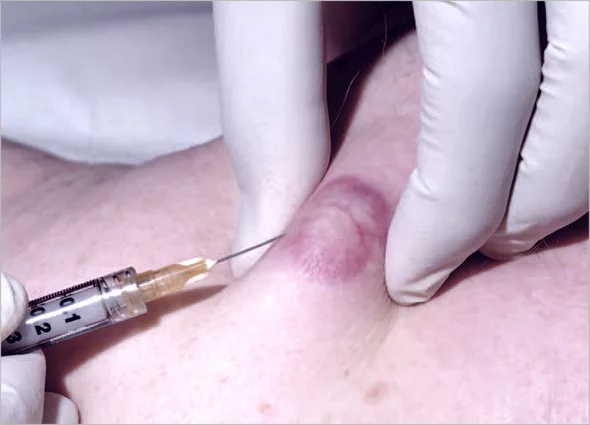Keloid Treatment - Abu Dhabi - Dubai
Keloid treatment involves various methods aimed at reducing the size, appearance, and symptoms associated with keloid scars. Keloids are raised, thickened scars that form as a result of an overgrowth of collagen during the healing process. Treatment options may vary depending on the severity of the keloid and individual factors. Here are some common keloid treatment approaches:
- 1. Corticosteroid injections: Intralesional corticosteroid injections are often the first-line treatment for keloids. Steroids help reduce inflammation, flatten the keloid, and relieve symptoms like itching or pain. Multiple injections are typically required over a period of several weeks or months.
- 2. Silicone gel or sheets: Applying silicone gel or sheets to the keloid can help soften and flatten the scar. This method usually requires consistent and prolonged use, sometimes for several months, to achieve noticeable results.
- 3. Pressure dressings: Pressure dressings or silicone-based sheets can be used to apply pressure on the keloid, which may help flatten and shrink the scar over time. These dressings are usually worn for several months.
- 4. Cryotherapy: Cryotherapy involves freezing the keloid with liquid nitrogen. This technique helps to reduce the size and hardness of the keloid. However, multiple sessions may be necessary, and there is a risk of hypopigmentation (lightening of the skin) as a side effect.
- 5. Surgical removal: Surgical excision involves cutting out the keloid scar. However, keloids have a high tendency to recur after surgery, often growing larger than the original scar. Therefore, surgical removal is usually combined with other treatments, such as corticosteroid injections or radiation therapy, to minimize the risk of recurrence.
- 6. Radiation therapy: Radiation therapy after surgical removal can help prevent the regrowth of keloids. It is typically reserved for large, recurrent keloids or cases where other treatments have been ineffective. However, the long-term effects of radiation exposure should be considered and discussed with a medical professional.
- 7. Laser therapy: Various laser treatments, such as pulsed dye laser or fractional laser, may be used to reduce redness, flatten the keloid, and improve the texture of the scar. Laser therapy is often combined with other treatment modalities for better results.
- 8. Other treatments: Other approaches, such as retinoid creams, bleomycin injections, 5-fluorouracil (5-FU) injections, or laser-assisted drug delivery, are sometimes used, either alone or in combination with other methods.
It's important to note that keloid treatment outcomes can vary from person to person, and there is no definitive cure for keloids. Consulting with a dermatologist or a plastic surgeon is recommended to determine the most suitable treatment plan based on individual circumstances.

